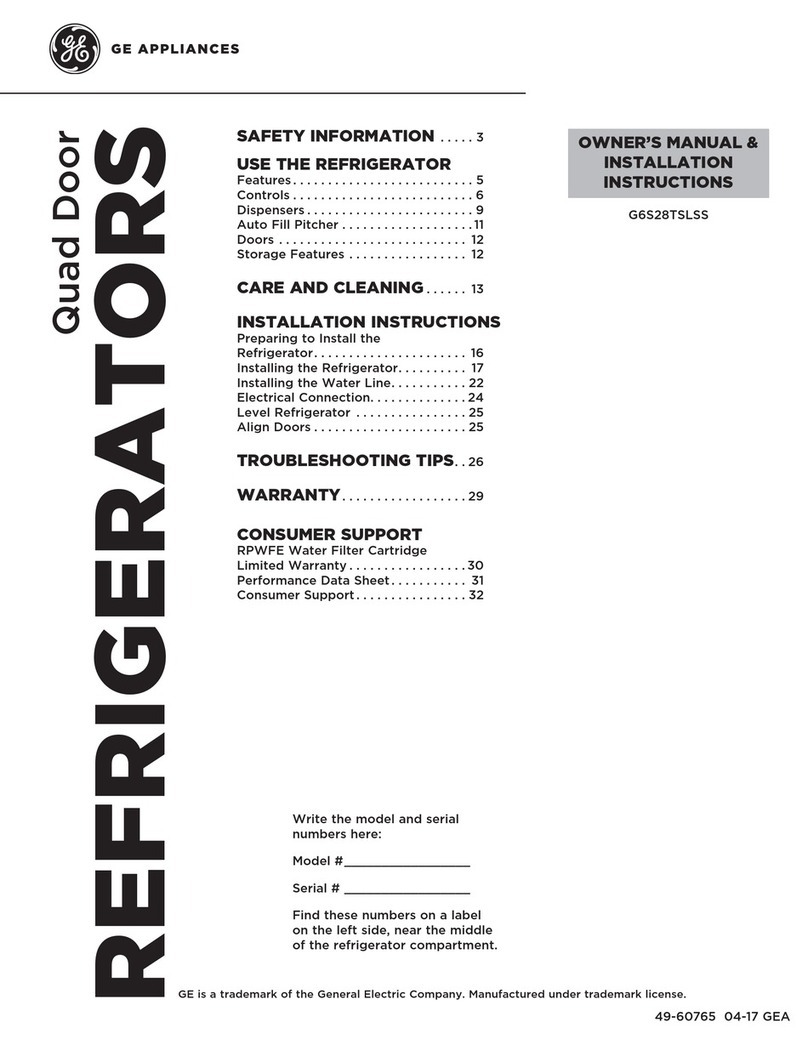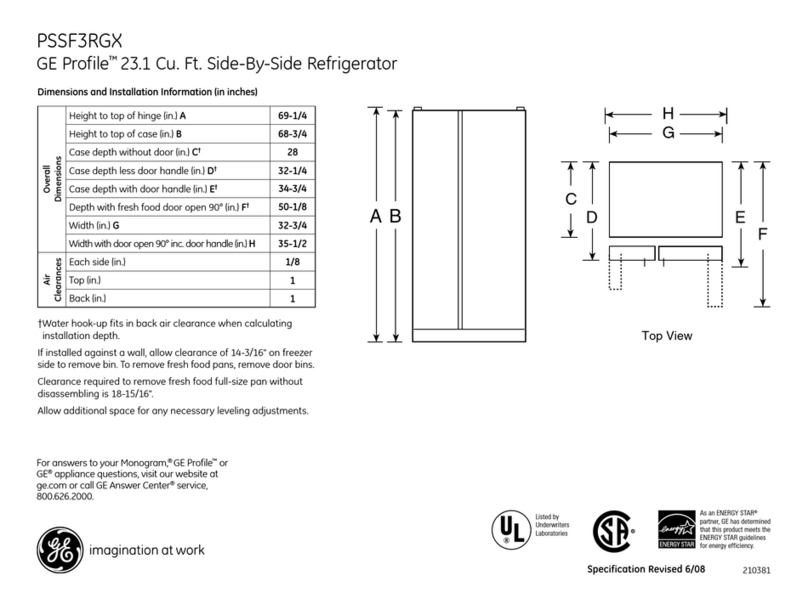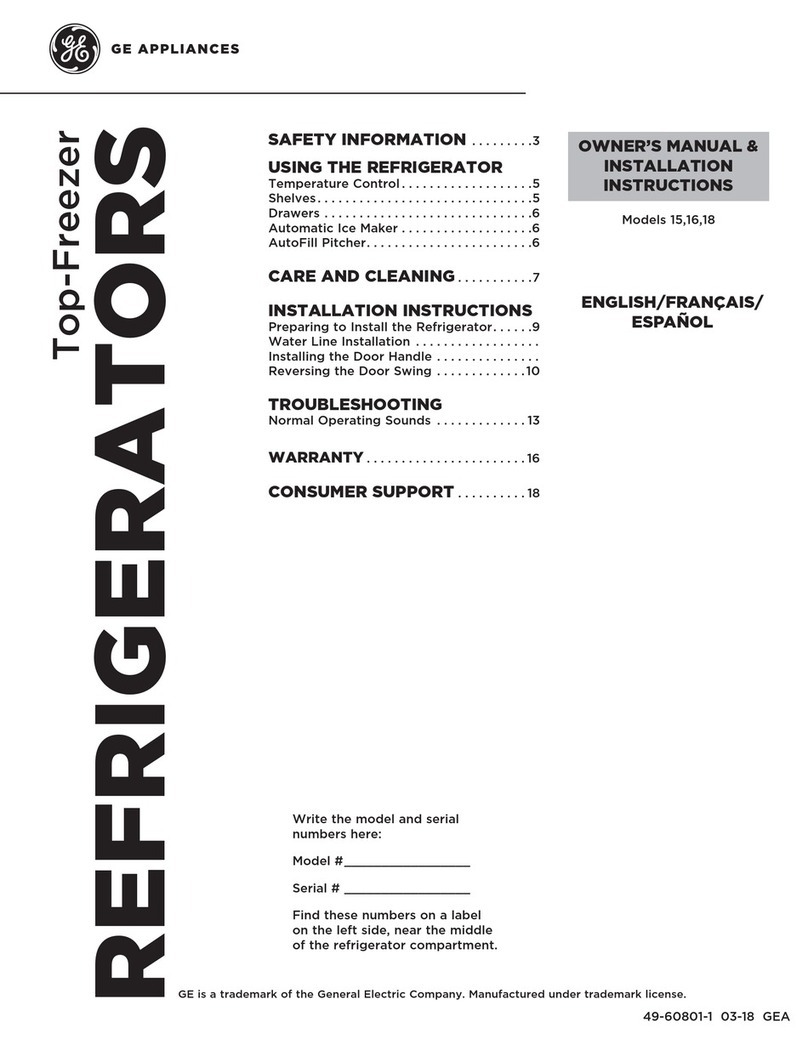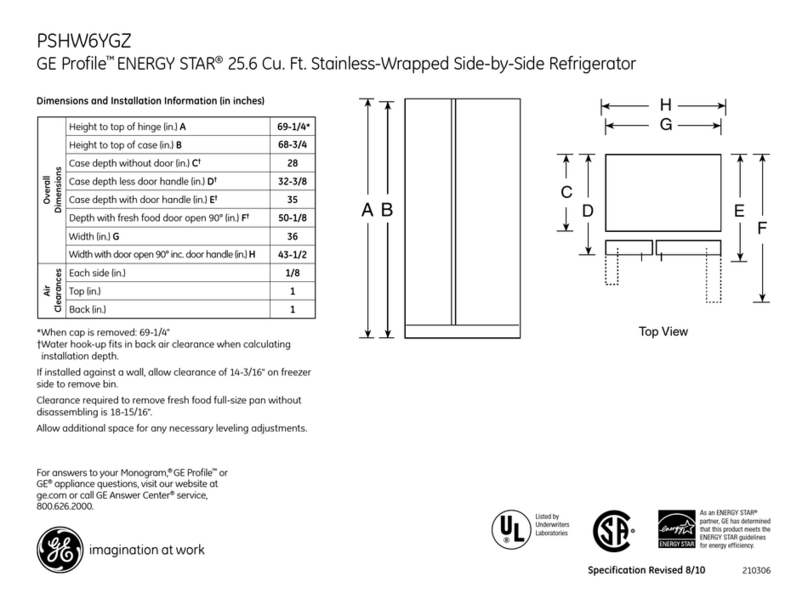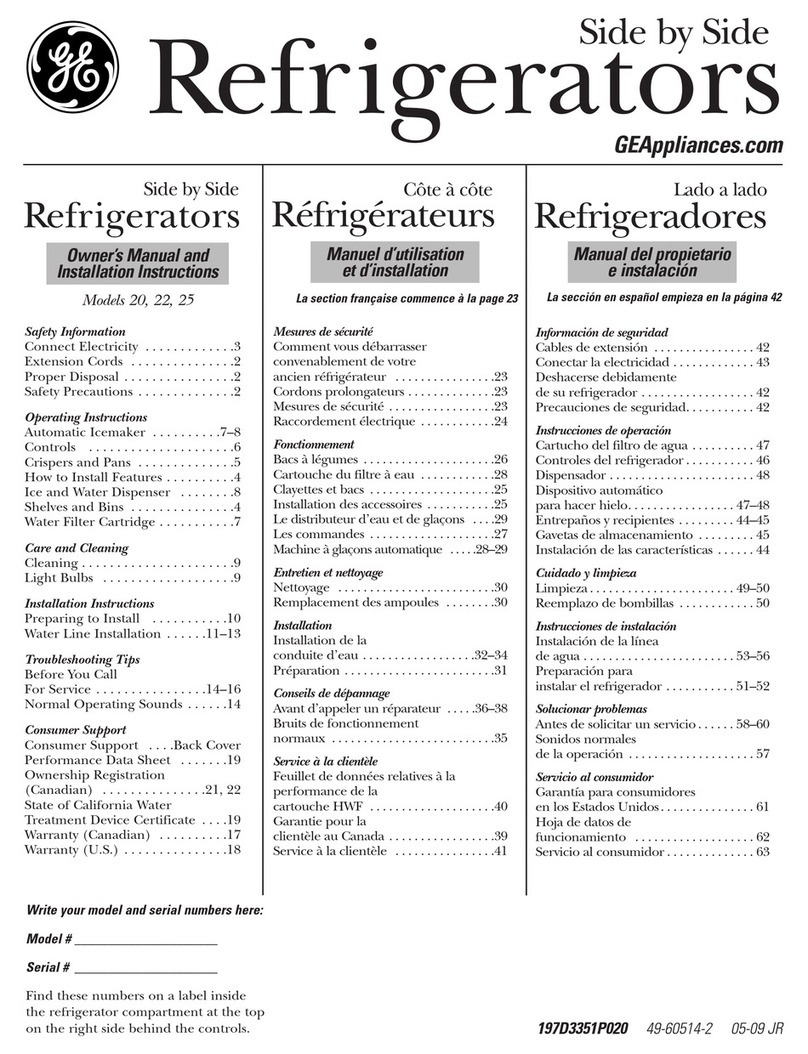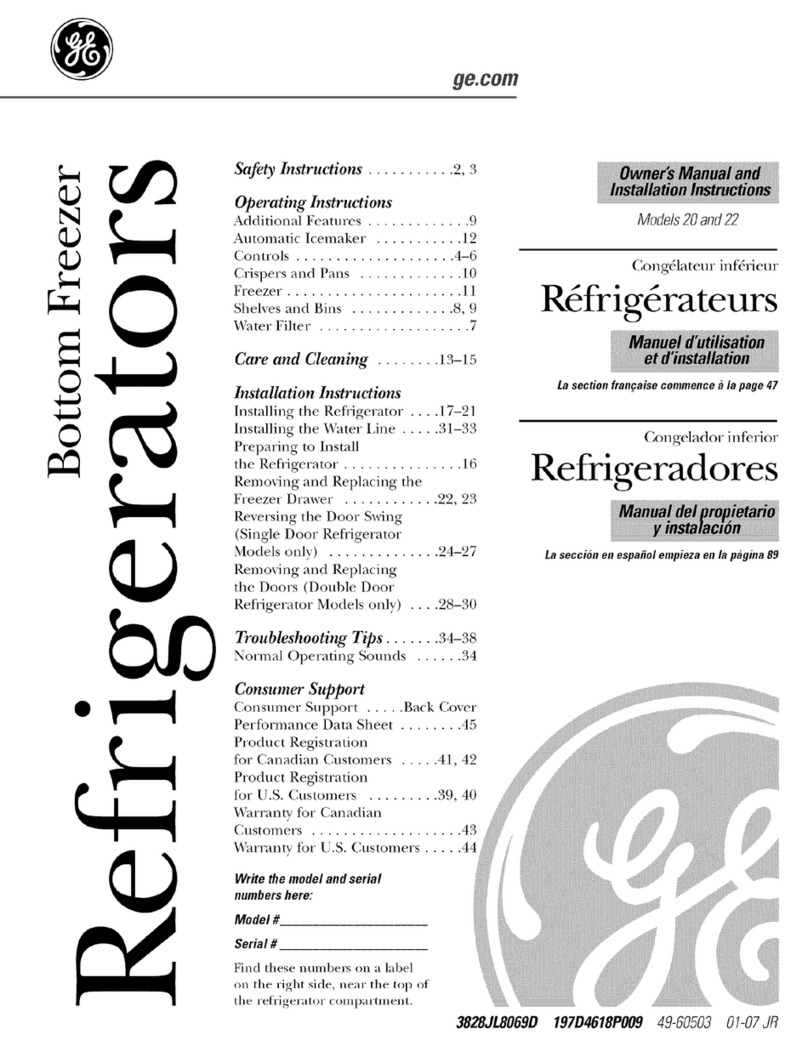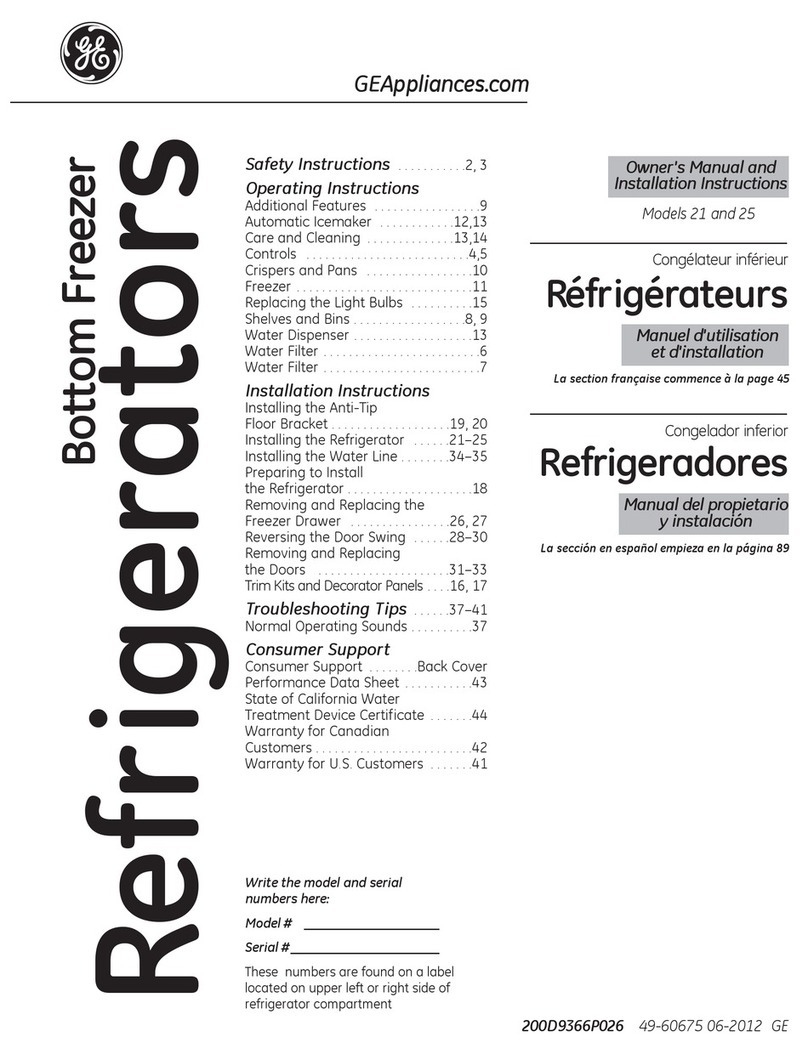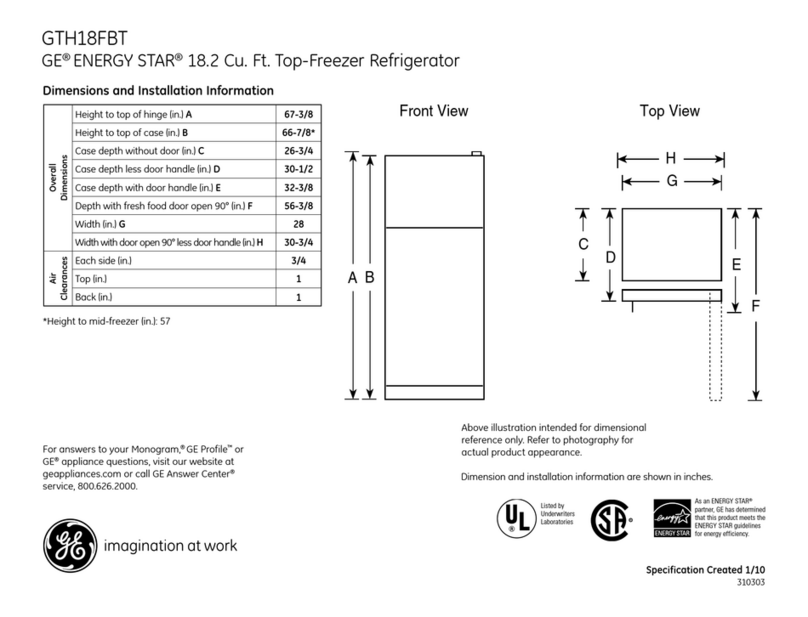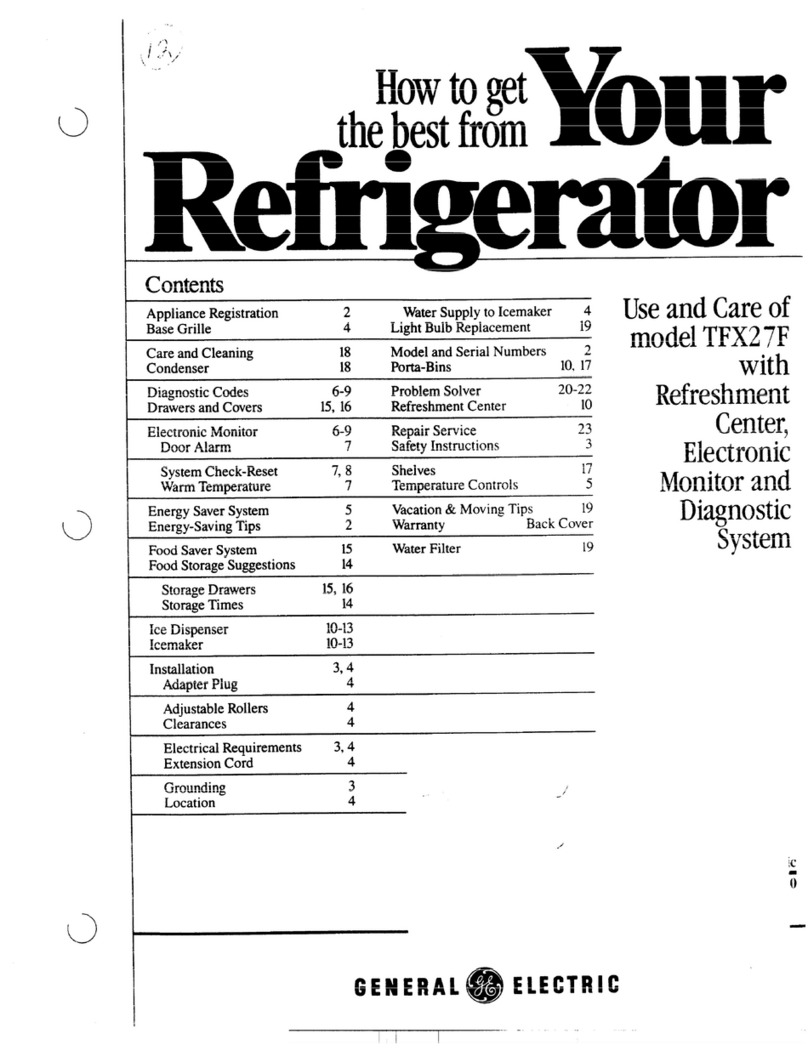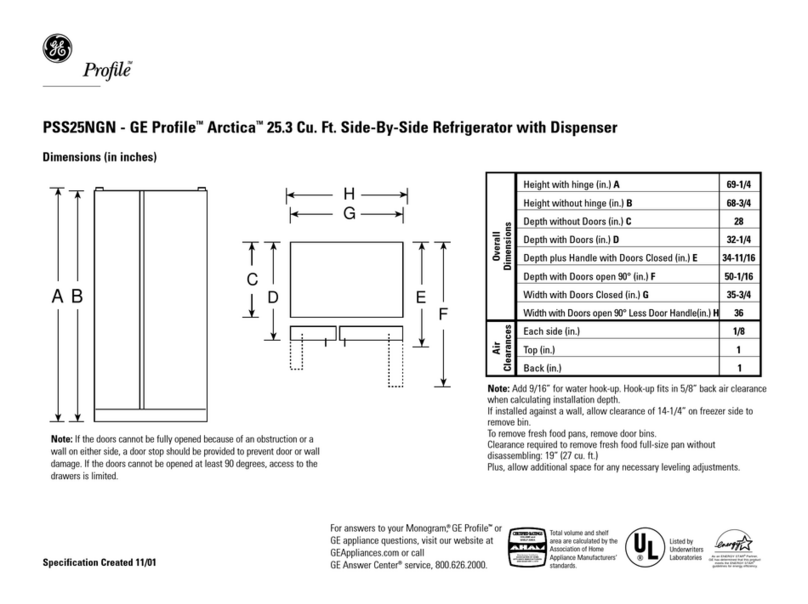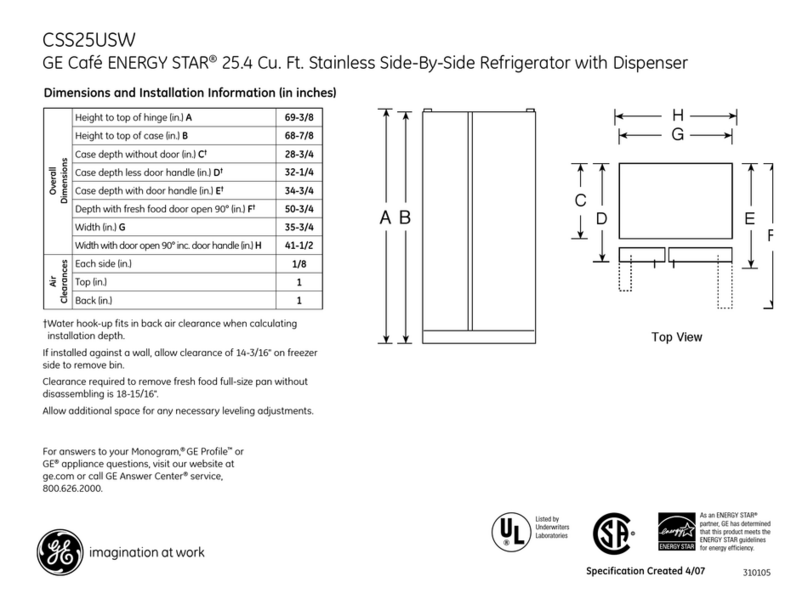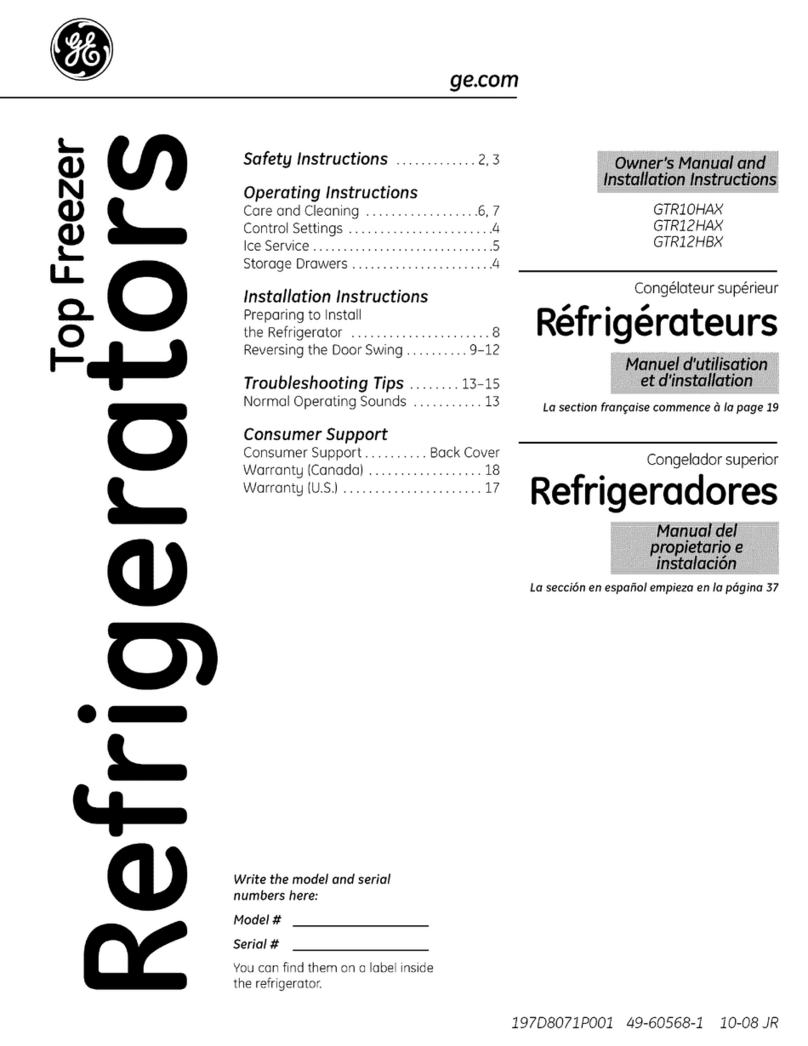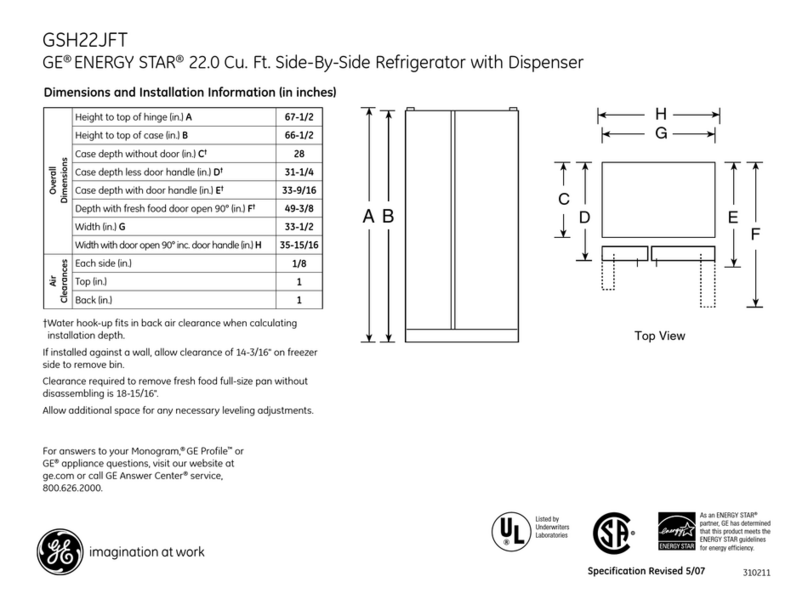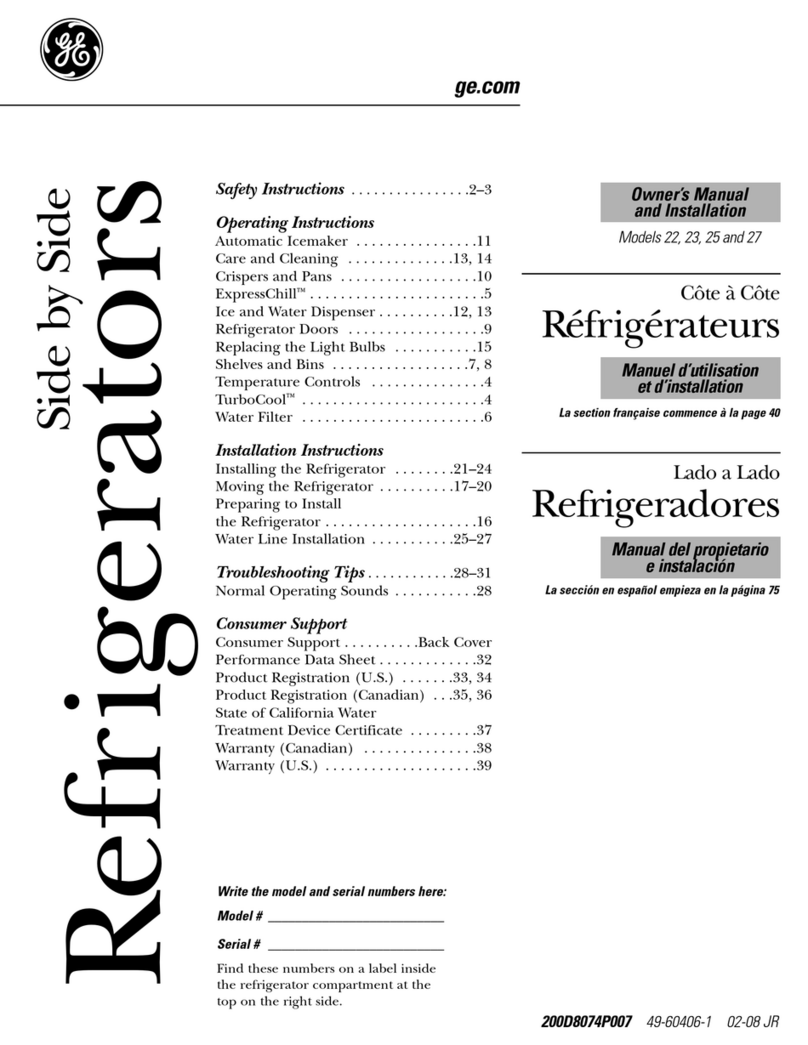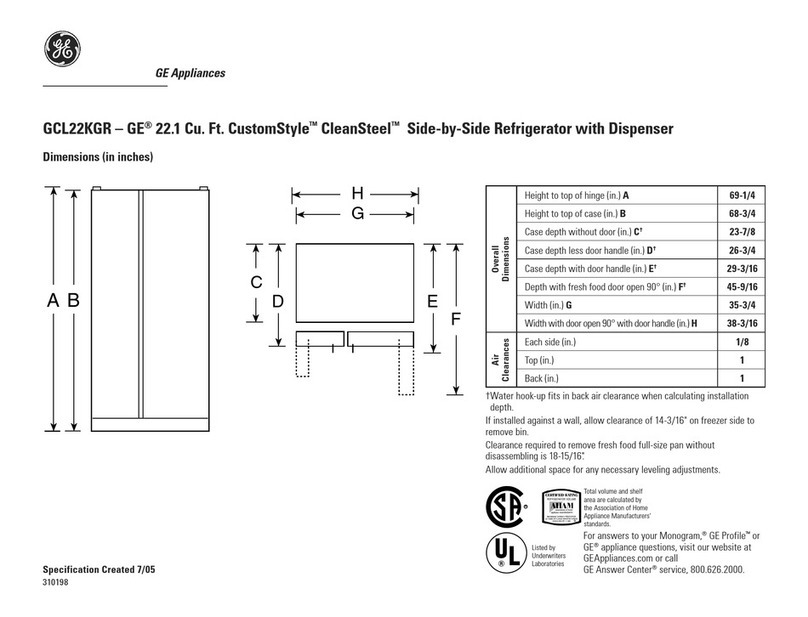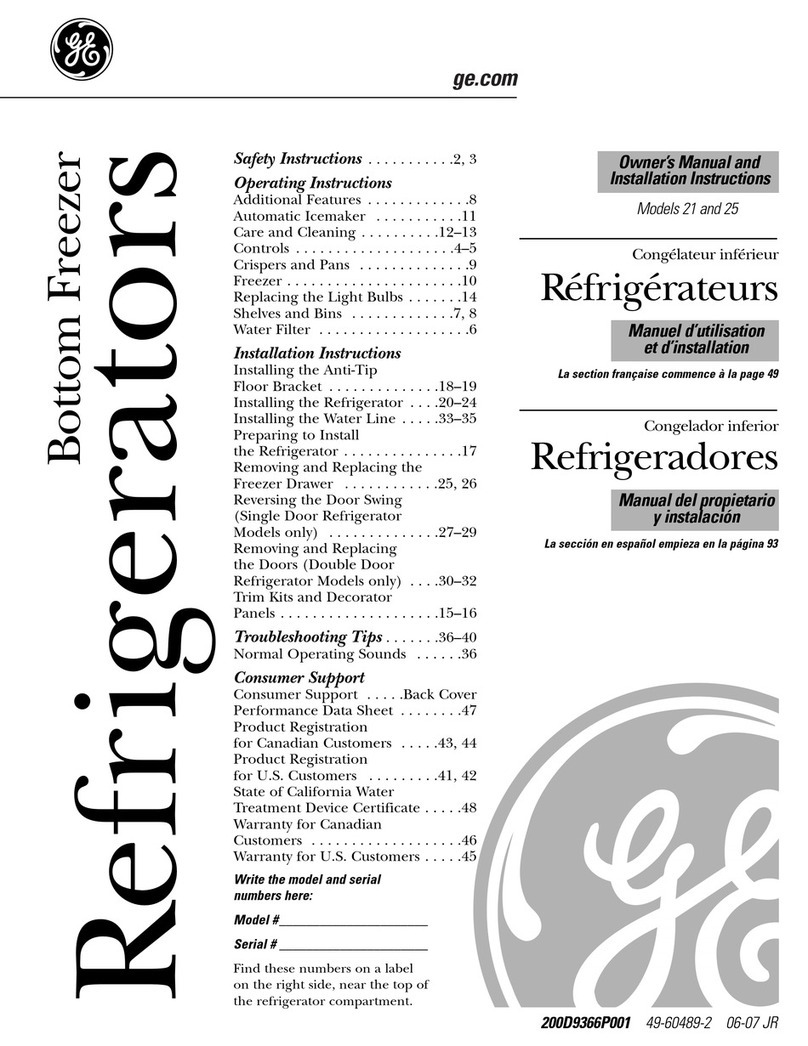Instillation Requirements
(continued)
IMPORTANT. . . Please Read Carefully.
Use of adapter plug
Because of potential safety
hazards under certain conditions,
we strongly recommend against
use of an adapter plug. However, if
you still elect to use an adapter,
where
local
codes permit, a
TEMPORARY
CONNE~ION
may
be made to a properly grounded
two-prong
wall
outlet by use of a
UL
listed adapter (Fig. 2) available
at most
local
hardware stores.
TE MP OR ARY METHOD
,ADAPTER
PLUGS NOT
PERMITTED IN CA NADAI
ALIGN LARGE PRONGS
S10r5
r’]
}
~~Ü‹
:“- “
&“qE:;:R:uND
w’”
““ AND FIRM CONNECTION
Fig. 2 8kFORE USE
The
larger
slot
in the adapter must
be aligned with the larger
slot
in
the wall outlet to provide proper
polarity in the connection of the
power cord.
CAUTION:
Attaching adapter
ground terminal to
will
ou~let
cover
screw does not ground the appliance
unless cover screw is metal, and
not insulated, and wall outlet is
grounded through house wiring.
You should have the circuit checked
by a qualified electrician to make
sure the outlet is properly
grounded.
When disconnecting the power
cord from the adapter,
always
hold the adapter with one hand. If
this is not done, the adapter ground
terminal is very likely to break with
repeated use.
Should the adapter ground
terminal break, DO
N~
USE the
appliance until a proper ground
has again been established.
Use of etiension cords
Because of potential safety hazards
under certain conditions, we
strongly recommend against the
use of an extension cord.
However,
if you still elect to use an extension
cord, it is absolutely necessary that
it be a UL listed 3-wire grounding
type appliance extension cord
having a grounding type
plug
and
outlet and that the electrical rating
of the cord be 15 amperes (minimum)
and 120 volts. Such extension cords
are obtainable through your
local
service organization.
The refrigerator should
always be plugged into its own
individual el~trical
outlet—
(115 volt, 60 Hertz, single phase
AC). This is recommended for best
performance and to prevent
overloading house wiring circuits,
which could cause a possible
f’ire
hazard from overheating wires.
Refrigerator Instigation
hation
This refrigerator is designed for
free-standing installation only. It
should not be recessed or built-in.
Install the refrigerator on a base
strong enough to support a fully
loaded refrigerator.
If the base is
not level, adjust the feet of the
refrigerator.
If the refrigerator is in a
40°F.
or
colder room, it will operate but
it will not
cool
foods
properly.
Also see Energy-Saving Tips
regarding location.
Clearance
Allow
the following clearances
for proper air circulation:
Top,
12”
Back, 5“
Sides, 1/2”
Operating Your
Refrigerator
Temperature
Control Dial
The temperature control dial has
settings from “MIN” to “MAX”
Ius
‘;OFFZ’
●
I
MIN
“MIN”
is the warmest.
“MAX”
is the coldest.
Initially set the temperature
control
dial
at the midpoint.
After using the refrigerator for
24 hours,
adjust the temperature
control to the setting that is best
suited to your needs.
Note:
If this refrigerator is unplugged
or turned off, you must
allow
3
minutes before restarting it or
plugging it back in.
If you attempt
to restart it in less than 3 minutes, it
will not start.
Note:
Turning temperature control
dial
to
‘OFF”
stops cooling but does
not
shut off power to the refrigerator.
